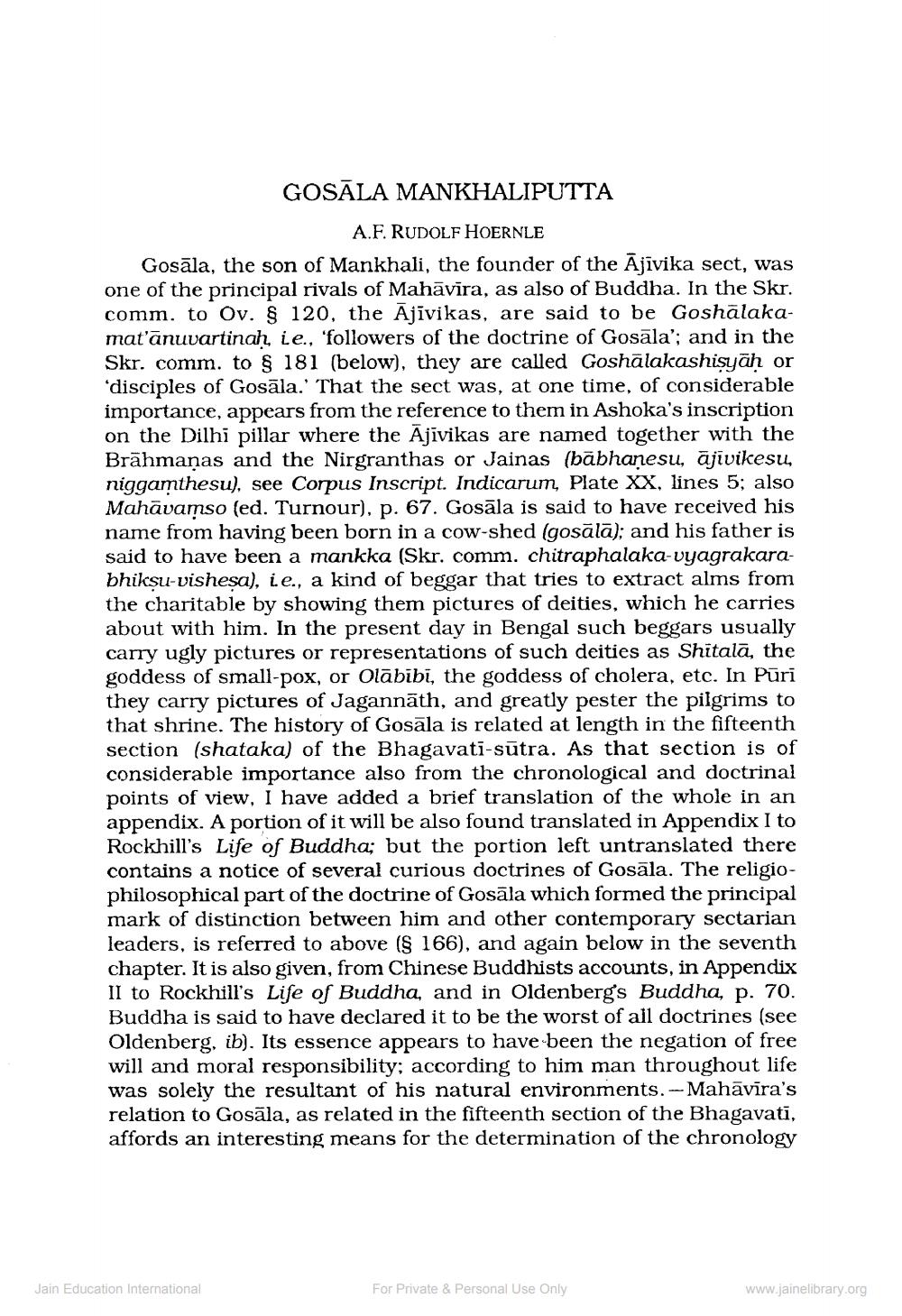Book Title: Jain Journal 1997 04 Author(s): Jain Bhawan Publication Publisher: Jain Bhawan Publication View full book textPage 6
________________ GOSĀLA MANKHALIPUTTA A.F. RUDOLF HOERNLE Gosāla, the son of Mankhali, the founder of the Ājīvika sect, was one of the principal rivals of Mahāvīra, as also of Buddha. In the Skr. comm. to Ov. $ 120, the Ajivikas, are said to be Goshalakamat'ānuvartinah, ie., 'followers of the doctrine of Gosāla'; and in the Skr. comm. to 8 181 (below), they are called Goshālakashisyāḥ or 'disciples of Gosāla.' That the sect was, at one time, of considerable importance, appears from the reference to them in Ashoka's inscription on the Dilhi pillar where the Ājivikas are named together with the Brāhmanas and the Nirgranthas or Jainas (babhanesu, ājivikesu, niggamthesu), see Corpus Inscript. Indicarum, Plate XX, lines 5; also Mahāvamso (ed. Turnour), p. 67. Gosāla is said to have received his name from having been born in a cow-shed (gosālā); and his father is said to have been a mankka (Skr. comm. chitraphalaka-vyagrakarabhiksu-vishesa), ie., a kind of beggar that tries to extract alms from the charitable by showing them pictures of deities, which he carries about with him. In the present day in Bengal such beggars usually carry ugly pictures or representations of such deities as Shitalā, the goddess of small-pox, or Olābibi, the goddess of cholera, etc. In Puri they carry pictures of Jagannāth, and greatly pester the pilgrims to that shrine. The history of Gosāla is related at length in the fifteenth section (shataka) of the Bhagavatī-sūtra. As that section is of considerable importance also from the chronological and doctrinal points of view, I have added a brief translation of the whole in an appendix. A portion of it will be also found translated in Appendix I to Rockhill's Life of Buddha; but the portion left untranslated there contains a notice of several curious doctrines of Gosāla. The religiophilosophical part of the doctrine of Gosāla which formed the principal mark of distinction between him and other contemporary sectarian leaders, is referred to above (8 166), and again below in the seventh chapter. It is also given, from Chinese Buddhists accounts, in Appendix II to Rockhill's Life of Buddha, and in Oldenberg's Buddha, p. 70. Buddha is said to have declared it to be the worst of all doctrines (see Oldenberg, ib). Its essence appears to have been the negation of free will and moral responsibility; according to him man throughout life was solely the resultant of his natural environments. ---Mahāvīra's relation to Gosāla, as related in the fifteenth section of the Bhagavati, affords an interesting means for the determination of the chronology Jain Education International For Private & Personal Use Only www.jainelibrary.orgPage Navigation
1 ... 4 5 6 7 8 9 10 11 12 13 14 15 16 17 18 19 20 21 22 23 24 25 26 27 28 29 30 31 32 33 34 35 36 37 38 39 40 41 42 43 44 45 46 47 48 49 50
